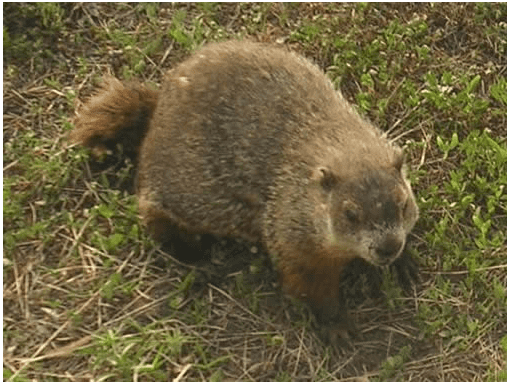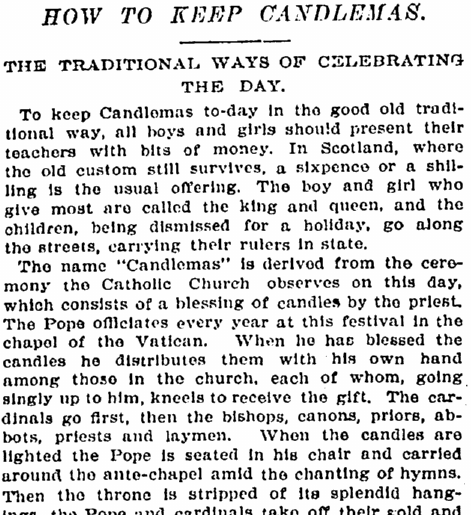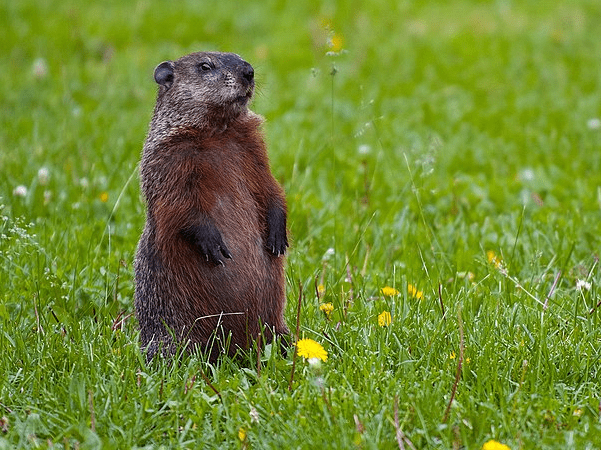Introduction: In this article, Scott Phillips searches old newspapers to find stories about the history of Groundhog Day, and takes a playful look at the genealogy of Punxsutawney Phil. Scott is a genealogical historian and owner of Onward To Our Past® genealogy services.
Polar Vortex! Storm of the Century! Weather Advisories, Watches, and Warnings! Wind-chill!
The weather folks know all the jargon and, as the New York Times stated in a headline dated 7 September 2012, “The Weatherman Is Not a Moron”—but when it comes right down to it, we all know that the best weatherman is good old Punxsutawney Phil. He’s the legendary groundhog who comes out of his burrow in Punxsutawney, Pennsylvania, every February 2nd to tell us when spring will arrive.

[Yesterday, for the first time in history, Phil’s big entrance coincided with the Super Bowl! To the dismay of chilled Americans throughout the U.S., Phil saw his shadow—meaning we have six more long weeks of winter before spring arrives.]
As I began writing this article the week before Groundhog Day, it was -10 degrees F just outside my office, we had 8 inches of new snow, and the wind-chill was a howling -25 degrees F. Not having any desire to venture outside into the freezing winter cold, I spent my time searching GenealogyBank’s Historical Newspaper Archives to see what I could find out about the genealogy of the famous Punxsutawney Phil. I wasn’t disappointed.
Candlemas Day Badger
My love of older traditions led me to focus my initial search on the tradition of Candlemas, which I remembered my grandmother telling me was the genesis of our Groundhog Day. First I discovered this 1898 article from a New York newspaper.

Toward the end of this 1800s newspaper article is the following quote:
“The badger peeps out of his hole on Candlemas Day, and when he finds snow, walks abroad; but if he sees the sun shining, he draws back into his hole.”
So it seems that Phil’s genealogy may actually lead us back to a badger in his family tree! Now I am sure this comes as no surprise to any of us who have worked our own genealogy, since we often find ourselves scratching our heads and saying to ourselves “How did that gal or fellow get into our family tree?”
Pagan Imbolc a.k.a. Saint Brighid’s Day
It wasn’t long before I came upon this 1989 article from an Illinois newspaper.
While February 2nd is traditionally the date for both Candlemas and Groundhog Day, I was intrigued to see that something called “Imbolc” is also concerned with “looking for the first sign of spring.”
I have to admit that I needed to do more research in order to learn about Imbolc. I found help with my next article, from a 1996 Georgia newspaper, titled “Pagans Emphasize Love of Nature.” “Aha,” I said aloud, “Phil’s genealogy goes all the way back to the Pagans!” Quite a lineage for a fellow from Punxsutawney, Pennsylvania!
Phil’s Weather Predictions of the Past
Next I came upon an 1875 article in an Ohio newspaper. It seems they, too, suffered through a miserably cold January—and unfortunately for them, Phil predicted another six long weeks of winter.
My next newspaper article was from another Ohio newspaper, this one printed in 1872. The steamboatmen, no doubt tired of the thick ice on the Ohio River, were hoping that Groundhog Day would bring them good news of an early spring.
And it seems that it wasn’t only the steamboatmen who were concerned with our furry friend. I found this 1902 article in a Pennsylvania newspaper. It reported: “Many persons, especially farmers, are firm believers in the superstition of ‘groundhog’ day and plans are laid accordingly.” Some farmers’ crops have been ruined by their belief in the groundhog’s forecasting powers. By this time I realized that Phil’s ancestors were commanding quite a nationwide following throughout the economy.
Does Phil Have Native American Roots?
Then a genealogy curveball was tossed into my research by this 1916 article I found in a New Jersey newspaper. This article gives the distinct impression that Phil’s genealogy was not rooted in Pagan or Celtic tradition, but was Native American in origin.
Additionally, this article reports that Phil’s ancestors may well have gone by different names: “…the groundhog—who also travels under the names of woodchuck, marmot and, scientifically, arctomys monax…”
While I have encountered ancestors changing their surnames from time to time in my personal genealogy, I realize now that Phil has quite the colorful and extensive genealogy. Perhaps it was some of Phil’s female ancestors who married into the “Woodchuck,” “Marmot,” and “Arctomys Monax” families!
I think my best option at this point is to do what every good genealogist knows is the best research avenue to follow, so I am packing my bags and buying my ticket to Punxsutawney, Pennsylvania. I need to see Punxsutawney Phil in person to study his family history and ask if he would introduce me to his parents and grandparents, if they are around, so I can ask them a few genealogy questions.
I hope you had a great Groundhog Day! Stay warm!
